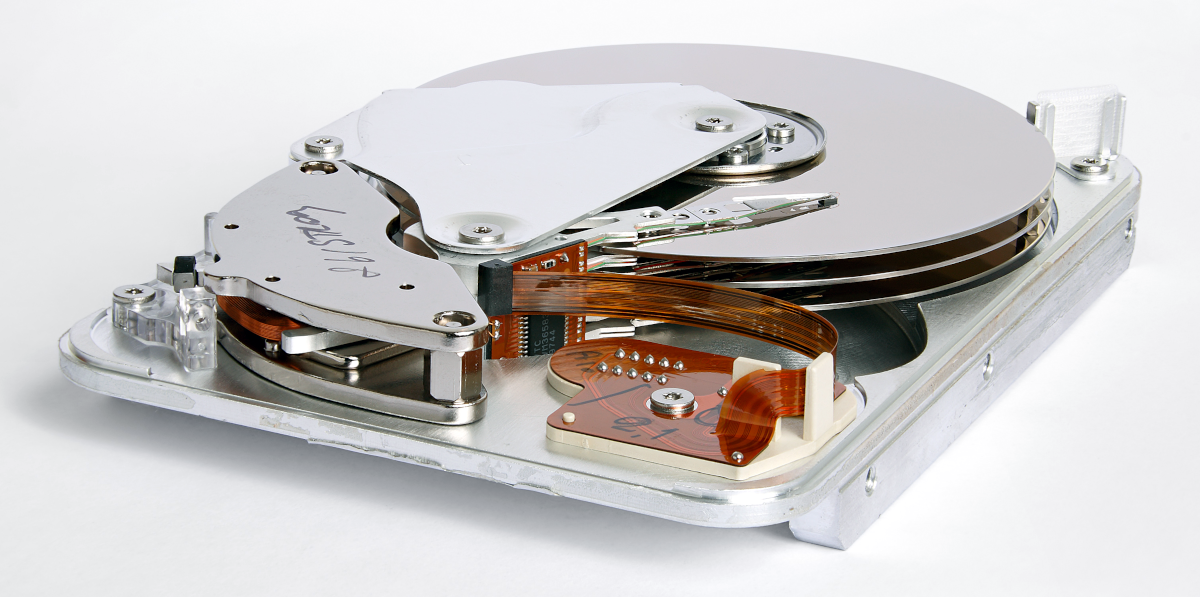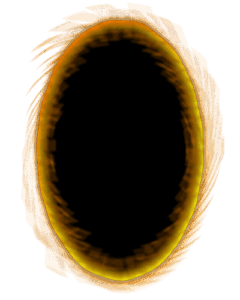
[Photo by Eric Gaba]
Ah, poor old HDDs! They served us, and served us well for decades, but today…

You Fell Through a Portal into a Hard Drive History Lesson!
In the beginning of the modern computer era, storage was on magnetic tape drives. This format of storage dominated the 60’s and the 70’s. Hard disk drives existed back then, but they were the meme-type stuff where 5 megabytes was as big as a car. Magnetic tape was cheap, spinning metal was pricey!
HDDs took centre stage in the 80’s (a period which is now acknowledged as the best of all decades). In 1983, the 3.5″ form factor HDD was first introduced, with a very sweet 10MB capacity. By 1990, HDDs reached 1GB (one whole and complete Gigabyte), and had mostly replaced tape drives for personal computers.
From 1990 and all the way to 2010, HDDs grew and grew. Capacities of 1TB became normal, and HDDs were very affordable. SSDs existed, but the price was prohibitive. In 2010, a 1TB HDD was $70, but an 80GB (yes, just 80GB) SSD was $200. If you were very rich, you could afford to pay 30x the price for the speedier drive, but most of us only had SSD dreams.
Dreams though, they sometimes come true. As the years passed, HDDs increased in capacity and became cheaper, but SSD capacities increased further and SSD prices dove more steeply. Slowly, SSDs went from niche to common, and by 2020 SSDs had become an essential part of the personal computer.
By 2023, on HDD’s 40th birthday, we were already wondering when the HDD era would be over, as the difference between the price-per-GB for SSDs and HDDs had shrunk to a few cents.

…welcome back. As I was saying: Today is the day. Well, it is actually well beyond the day.
HDDs and SSDs Today
SSDs in 1TB capacities are now cheaper than similar-capacity HDDs from 15 years ago (which are still being sold at those costs). At such prices, we cannot recommend 1TB HDDs.
In fact, with how cheap 1TB SSDs are, we cannot recommend HDDs as default any more, at any price point:
- If you are very tight on cash, cheap SSDs are as cheap as cheap HDDs.
- If your budget is middle-of-the-road, 1TB SSDs are affordable and 1TB is enough(ish) for mid-budget.
- For those with deeper pockets, 2TB and 4TB SSDs are now cheaper than mid-tier graphics cards.
- If you are Bezos-ing a PC, the 8TB stuff is for you. It is barely $1000. And Bezos, be a darling and send a couple of those 8TB SSDs to those in need.
Indeed, HDDs can only be recommended for those who need very high storage capacities for a cheap price, and who do not mind the slow speeds. Perhaps professional video editors who have a lot of raw footage, or archivists (read: data hoarders) of various types, or people who have a very large digital library of (legally obtained) media.
For the rest of us, it is time to salute HDDs for their excellent service, and to say goodbye. HDDs reigned for 20 good years, but it is now time to rest, old soldier.
Going Forward
The following changes will soon be made to every version of our main PC build chart:
- “No HDD” is now the default recommendation for all builds
- 256GB SSD is recommended for Destitute only
- 512GB SSD is recommended for Poor only
- 1TB SSD or higher is recommended for everyone above Poor
- Good are the 2TB SSDs, because 2TB SSDs are Good
- Enthusiasts get 4TB SSDs
- 8TB SSDs are an option for the most expensive tiers
- 30TB HDDs are an option for the most expensive tiers, and- WOW, THIRTY TERABYTES?!?!?!
- All HDDs are recommended at a capacity that is higher than the default SSD for that tier
SSDs are already just a few cents away from HDDs, in price per GB. In a few years, assuming future trends follow the same path as the current and past trends, SSD prices will fall till they reach parity with HDDs.
At that point, HDDs will cease to be recommended, and it will become time to wonder when we will be getting those 360TB quartz drives. I hope that I will still be around then, to tell the next generation that “back in MY day, our games were stored on an IRL save icon, and smartphones did not even exist!”